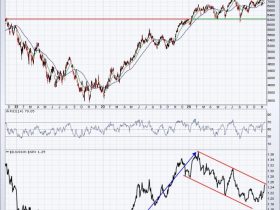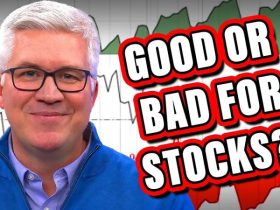Sector rotation refers to the shifting of investments from one sector to another based on the economic cycle. It is a common strategy used by investors to capitalize on the opportunities present in different sectors at various stages of the economic cycle. However, the recent trends in sector rotation are giving conflicting stories, creating uncertainty in the investment landscape.
Traditionally, investors have viewed sector rotation as a way to benefit from the various phases of the economic cycle. For example, defensive sectors like utilities and consumer staples tend to perform well during economic downturns, while cyclical sectors like technology and industrials tend to outperform during periods of economic expansion. As a result, investors would adjust their portfolios according to their expectations of where the economy is heading.
In recent times, however, the traditional patterns of sector rotation seem to be breaking down. One of the main reasons for this is the unprecedented impact of the COVID-19 pandemic on the global economy. The pandemic led to massive disruptions across various sectors, with some benefiting from the changes in consumer behavior while others struggled to adapt.
For instance, technology and e-commerce companies experienced a surge in demand as more people turned to online shopping and remote work. This led to a significant outperformance of the technology sector compared to other sectors such as energy and financials, which were adversely affected by the economic shutdowns. As a result, investors who followed the traditional sector rotation strategy may have missed out on significant gains from tech stocks.
Another factor causing conflicting stories in sector rotation is the changing dynamics of the market. The rise of passive investing through index funds and ETFs has altered the traditional patterns of sector rotation. Investors pouring money into these funds may inadvertently drive up the prices of certain sectors while neglecting others, leading to distortions in sector performance.
Moreover, the increasing influence of geopolitical events and central bank policies on the market adds another layer of complexity to sector rotation. Uncertainties surrounding trade tensions, interest rates, and global economic growth can cause sudden shifts in sector performance, making it challenging for investors to predict which sectors will outperform in the short term.
In conclusion, while sector rotation has long been a popular investment strategy, the conflicting stories emerging in today’s market highlight the need for investors to adapt and evolve their approach. The traditional patterns of sector rotation may no longer hold true in the current environment of rapid technological advancements, global uncertainties, and changing market dynamics. Understanding the factors driving sector performance and staying informed about the latest trends in the market are essential for navigating the complexities of sector rotation successfully.











